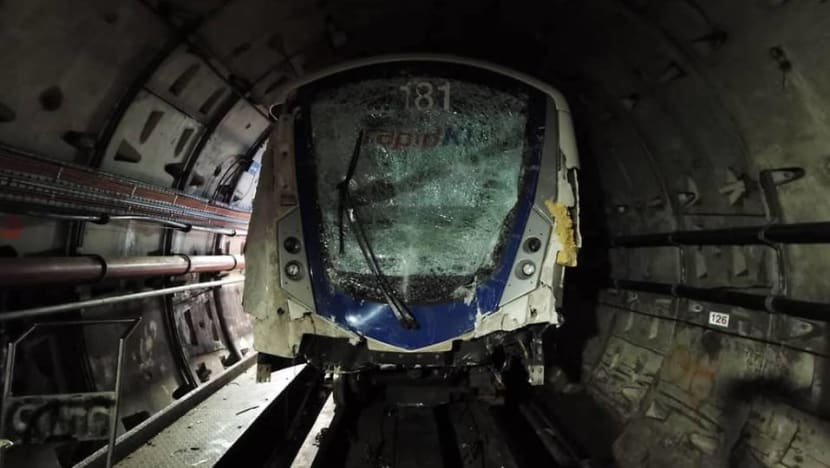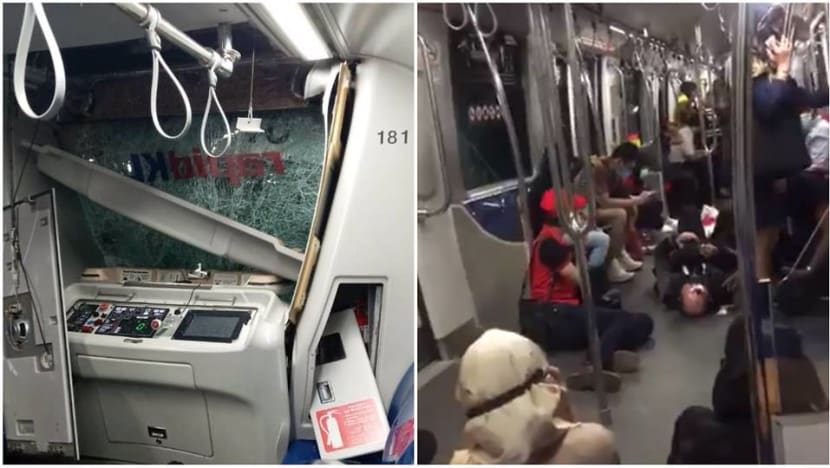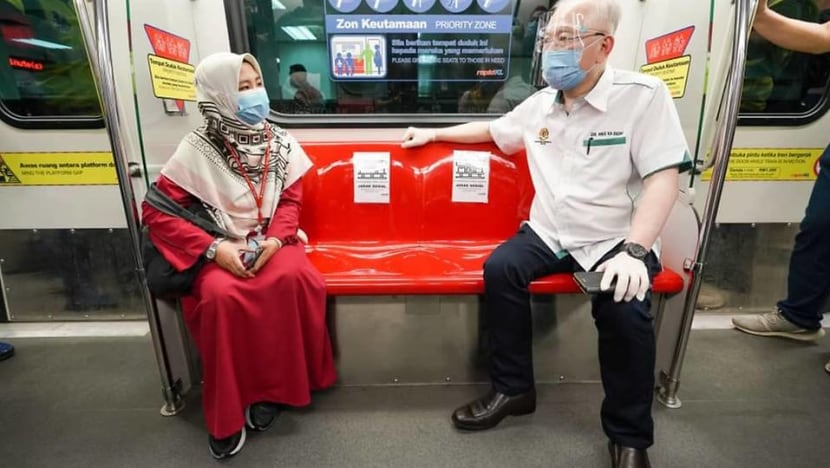Investigation report shows train driver, control centre overlooked critical procedures before LRT crash: Wee Ka Siong

LRT train 181 was involved in a head-on collision near KLCC in downtown Kuala Lumpur on May 24, 2021. (Photo: Facebook/Wee Ka Siong)
KUALA LUMPUR: The investigation findings for the crash involving two trains on the Kelana Jaya Light Rail Transit (LRT) line on May 24 showed that certain critical procedures were neglected by the hostler and operation control centre.
Minister for Transport Wee Ka Siong said in a press conference on Thursday (Jun 10) that as a consequence, one of the trains headed in the wrong direction and collided with a passenger-carrying train that was released prematurely from the KLCC station.
Dr Wee explained that Train 40 had experienced technical difficulties, and that both of its Vehicle Onboard Communication (VOBC) systems had stopped working on the day of the incident.
It was supposed to be brought to the depot via automated train operation (ATO) for necessary maintenance, but had lost communication with the operation centre and stopped at the Kampung Baru station.
A hostler (train driver) was then summoned to manually drive the train to the nearest re-entry point, Dr Wee said.
“Investigations found that during the process of moving Train 40 to be reset back into ATO mode, both the hostler and the train controller at the operation centre had neglected critical SOPs," the minister added.
“This inadvertently resulted in Train 40 being manually driven north, Gombak-bound (and towards the KLCC station), instead of south-bound towards the depot as intended," he said.
Meanwhile, the passenger-carrying Train 81 was released from KLCC Station without accurate confirmation that Train 40 had been reset to ATO mode.
"Such circumstances then caused the crash between Train 40 and Train 81," Dr Wee said.

The May 24 accident caused varying degrees of injury to over 210 passengers, including six who were in critical condition.
Track repair works were carried out and full service later resumed on May 28.
The investigation report was tabled at the weekly Cabinet meeting on Wednesday.
READ: KLCC train collision - LRT line resumes on single track, to be fully operational in 3 days
READ: KLCC train collision - 6 in critical condition; special task force to investigate accident
Dr Wee explained in the press conference that some of the critical SOPs neglected included cancelling the Manual Route Reservation (MRR) before it was confirmed the hostler on Train 40 had already completed his job, and that he was heading in the right direction.
"There must be communication and instructions given, (once) everything is cleared, then only the MRR can be cancelled and Train 81 can move on in ATO," the minister said.
"These are the things that were supposed to be checked properly, and there was no strict compliance with the SOPs, hence you had this collision," Dr Wee said during the Q&A session.
23 RECOMMENDATIONS FOR IMPROVEMENTS
Dr Wee stressed that the investigation committee's findings were aimed at introducing systemic improvements to the LRT system, and not to apportion blame or liability to any parties.
He said the committee's report also contained 23 recommendations for improvements.

Short-term recommendations included posting two hostlers during manual train operations within tunnels and upgrading equipment for hostlers driving in low-visibility areas.
Reviewing the operation guidelines and manuals for the OCC and hostlers, improving refresher and recertification courses and improving the train detection system were also part of the mid- and long-term recommendations.












